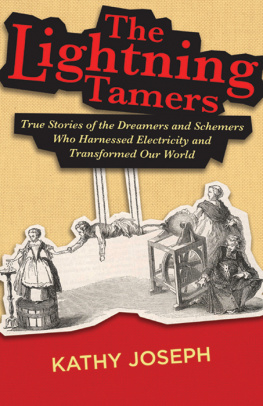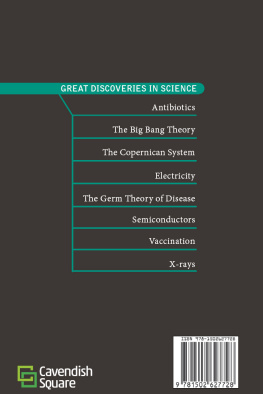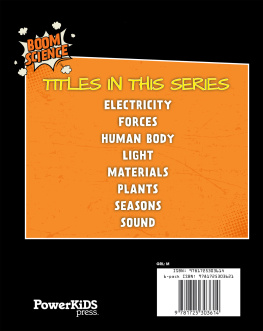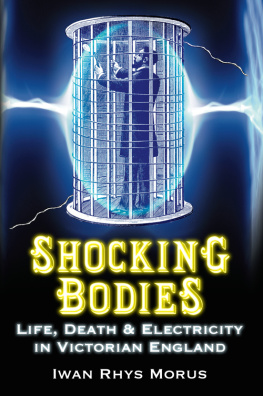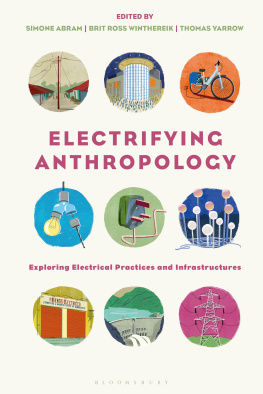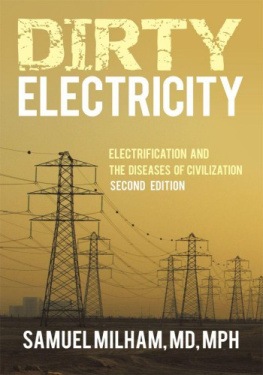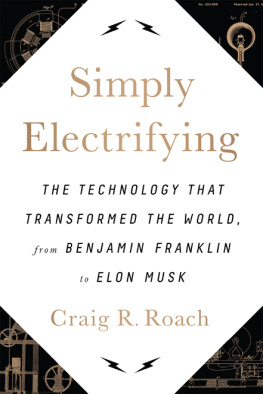First published by
PO Box 1852
Strawberry Hills
NSW 2012
AUSTRALIA
Printed by PRINTBOOKS MELBOURNE
ISBN 978-0-9943096-0-0 (paperback)
ISBN 978-0-9943096-1-7 (eBook)
Copyright 2015 Sandra Darroch
All rights reserved worldwide. No part of the book may be copied or changed in any format, sold, or used in any way other than what is outlined in this book, under any circumstances, without the prior written permission of the copyright-holder
Digital distribution by Ebook Alchemy
PREFACE
ELECTRICITY WAS brought to Australia by Captain Cook. It arrived at Botany Bay on April 19, 1770, aboard HM Bark Endeavour. The electricity was in a Leyden jar used by Joseph Banks and Daniel Solander for electrical experiments carried out during their voyage of discovery around the world. (They enjoyed the electric shocks it gave them and other members of the ships company.) But it wasnt for more than another century, in 1878, that electricity was first used to illuminate a building in Sydney. It was produced by several generators brought out from England to power arc-lights to hasten the construction of the Garden Palace the great Sydney International Exhibition staged in the Botanic Garden in 1879-80. Yet it took another 26 years, and - as I describe in chapter 1 many false starts before the streets of Sydney were to be lit by electricity. From that moment on, the trials, tribulations and triumphs of the development of electricity in Sydney and NSW touched the lives of almost everyone, high and low. Its story is an integral part of the social, economic and political fabric of our city and our State. It brought great benefits and great opportunities, some of which involved dishonesty and, alas, corruption.
This book, too, has had a rocky road. It originated in a colour-feature article I wrote in 1995 for the Sydney Morning Heralds Good Weekend magazine about electricity substations in suburban Sydney, many of which were disguised (for reasons I will describe) as other structures - such as suburban bungalows, garages, church buildings, and even public toilets. Following the publication of my article I was approached by Sydney Electricity, at that time still the electricity authority for the Greater Sydney area (although a new entity, energyAustralia, was being formed), to write a history of electricity in Sydney and NSW. An earlier book, 50 Years of Electricity Supply, had taken the story of electricity in Sydney up to 1954. My book was commissioned by Sydney Electricity to continue the story from 1904 to what was then the present day, in preparation for the anniversary of 100 years of electricity in Sydney and NSW in 2004.
I began working on my book in the mid-1990s, and spent more than three years initially researching it. During that time, and in subsequent years, Sydney Electricity underwent a series of upheavals which led to it being broken up into a number of other entities and manifestations (as I describe in my final chapters). I have made a special case study of Sydney Electricity and its later manifestations because its story reflects what has occurred in the electricity industry throughout Australia.
Today, electricity in Australia and elsewhere is merely one aspect of an ever-more complex and changing world of energy-generation and power-supply.
During my research I met a lot of people who, I came to believe, were doing a difficult job in trying circumstances. I came away with a high regard for the engineers and other technical staff indoors and out who were the backbone of the electricity authority (which, above all else, was an engineering undertaking). Unfortunately the management above them did not always make their job easy. Moreover, their political masters - at all levels of government - also made things difficult for them. The politicians had other agendas, and often seemed to be playing a different game. I came across examples of waste of money and resources, and, frankly, mismanagement. Whole departments would be set up, brand-new equipment installed, new staff brought in, only to be closed down a few months later. I saw rows of idle workers lounging at their desks playing computer games, with senior management apparently twiddling its thumbs upstairs.
Locating research materials was a particularly difficult task. When I asked where the authoritys files and records were to be found, I was directed somewhat guiltily - to the 7th floor of an adjacent derelict building where my husband (who was assisting me) and I found an entire floor full of disused office furniture and equipment, together with the jumbled content of what had once been the authoritys library and archives. By the time I came on the scene, what had been the library had been closed down and reduced literally - to a jumble of documents and photographs dumped in the middle of the floor of the unoccupied building in Pitt Street. This pile of junk was all that remained of many decades of scrupulously-kept authority records and memorabilia. From the pile we picked out some important items, such as letters from electricity pioneers like Thomas Edison, together with poignant souvenirs of the past, like the cards on which female staff pencilled in their dancing partners at the annual company ball. (In earlier years, workforce morale was high, and the staff took pride in their work and the role they were playing in bringing power to the people of Sydney.)
We set up some of the upturned tables adjacent to the jumble of documents and for several days attempted to sort out the mess into some semblance of order. We then with the permission of the senior officer who had commissioned me to undertake the job - took some of the first 20 years of records home to work on (we could not do this on the spot, as there werent facilities to do so). Some weeks later, after we finished sorting through the first cache of records, we took them back to the Pitt Street building to collect our next tranche, only to find that someone had ignored our DO NOT TOUCH notice and had tipped the entire collection of records back into a heap on the floor. This time we took everything we could carry back home, and once again tried to make sense of the muddle. (If only we had come a few months earlier, before the Visigoths arrived!)
In the course of my research not only in what remained of the authoritys library, but in other records and archives elsewhere - I was able to trace the social, geographical and demographic development of Sydney, as electricity snaked out into the suburbs and beyond, opening up new areas for sub-division and habitation. I delved into the lives of suburban housewives, lured by persuasive electricity-appliance salesmen to try the new electric stoves and other appliances that might transform their home duties and free them from household drudgery.
As I started writing this book, the Internet began to impinge on all our lives, bringing with it an even greater revolution (and one which is also to a great extent powered by electricity). Access to information via the Internet greatly assisted my research, particularly when I came to bring the story up to date. After four years of initial work I finally had a book I was happy with. I delivered it to Sydney Electricity, only to be rung a few weeks later by the company secretary - a good and honourable man - who had read and liked my manuscript, but urged me to put in the invoice for my work quick-smart. He told me had been dismissed, and was departing that Friday. Approving my cheque was almost his final duty.


